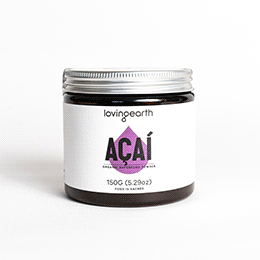Sometimes it’s easy to lose sight of the impact of working at Loving Earth. On one hand, we do get lots of great feedback from happy healthy customers about how much they love our products. But for the most part, the other end of the equation is a lot quieter. Sitting behind a desk sifting through emails, engaged in endless meetings about technical matters or involved in the everyday grind of keeping our products on the shelves, we’re usually far removed from the source of our products: the growers and the earth. But sometimes, we get to experience the true impact of our work.
The sky is a deep blue as we ascend the hills, rattling along dusty roads and cattle trails. We climb ever higher from Mexico City into the hills of Hidalgo, Maguey plants of all sizes beginning to appear at the roadside. We arrive at Indalecio’s farmhouse to meet the heads of two family groups from our Agave producing co-op. In jeeps and utes they take us down a dirt track atop the crest of a hill: we arrive at the nursery populated with hundreds of fledgling Maguey plants, not yet mature enough to produce Agave. This is the ideal spot for their juvenile stage, the volcanic soil providing them with all they need. They’re planted in orderly rows to function as wind breaks for the other crops (mainly corn and barley). It takes roughly 10 years for a Maguey plant to reach maturity, at which point they begin to produce “agua de miel” (“honeywater”), continuing for just one year before they expire.
In this area, 150 km north of Mexico City, emigration to the United States is estimated to be as high as 70%. Yet over the past 14 years, more than 60 families have retuned to the community here. This is due to the success of the Agave Project. It has revitalised the area by commercialising the Agave-producing Maguey plant, which has been central to agriculture here for thousands of years. Traditionally used in the manufacture of Pulque, an alcoholic drink somewhere between beer and wine, its cultivation and use goes back to pre-Aztec times. With the arrival of European settlers, Pulque became less desirable during the 20th century as beer increased in popularity. As demand for it dropped, states such as Hidalgo and Tlaxcala which were heavily dependent on it saw a decline in fortunes.
Five years ago I spent about half a year in Mexico, including a period in Chiapas working with the Tzotzil, an indigenous group of Maya people from the highlands who grow coffee. Conditions in their locale were comparatively primitive - no running water, limited electricity, an extremely basic and unvaried diet and rudimentary dwellings built from wood and corrugated iron. Though attempting to commercialise a high-quality crop which is much in demand, they were nevertheless living in deep poverty: they couldn't find the right market for their coffee. The situation here in Hidalgo is in stark contrast to that of where I worked in Chiapas: though both areas are populated by a marginalised indigenous demographic, there is a contrasting level of affluence between both which is astounding.

Visiting the Maguey nurseries in July 2014, I’m accompanied by jovial Guadalajara native Senõr Manuel. Pictured above here (together with yours truly and a glass of fresh Pulque), he's a jolly character and head of the Nekutli Group; he's driven eight hours to get here, a trip he often makes in his role administrating the Agave project. Senõr Manuel and the Nekutli Group began developing the project back in 1998, realising that there was a market for Organic Agave as an alternative to High Fructose Corn Syrup. They took samples to the Jesuit University in Guadalajara in 1999 and after receiving positive results, they began constructing the processing plants in Hidalgo in 2000. The organic fair trade element and the high quality of the flavour were important factors in its success, but the primary intention for Senõr Manuel was the social component: allowing people to receive education, preserve their culture, slow down emigration and allow for families to live together. It has been a massive success.
Read Part 2: Education & Opportunities



